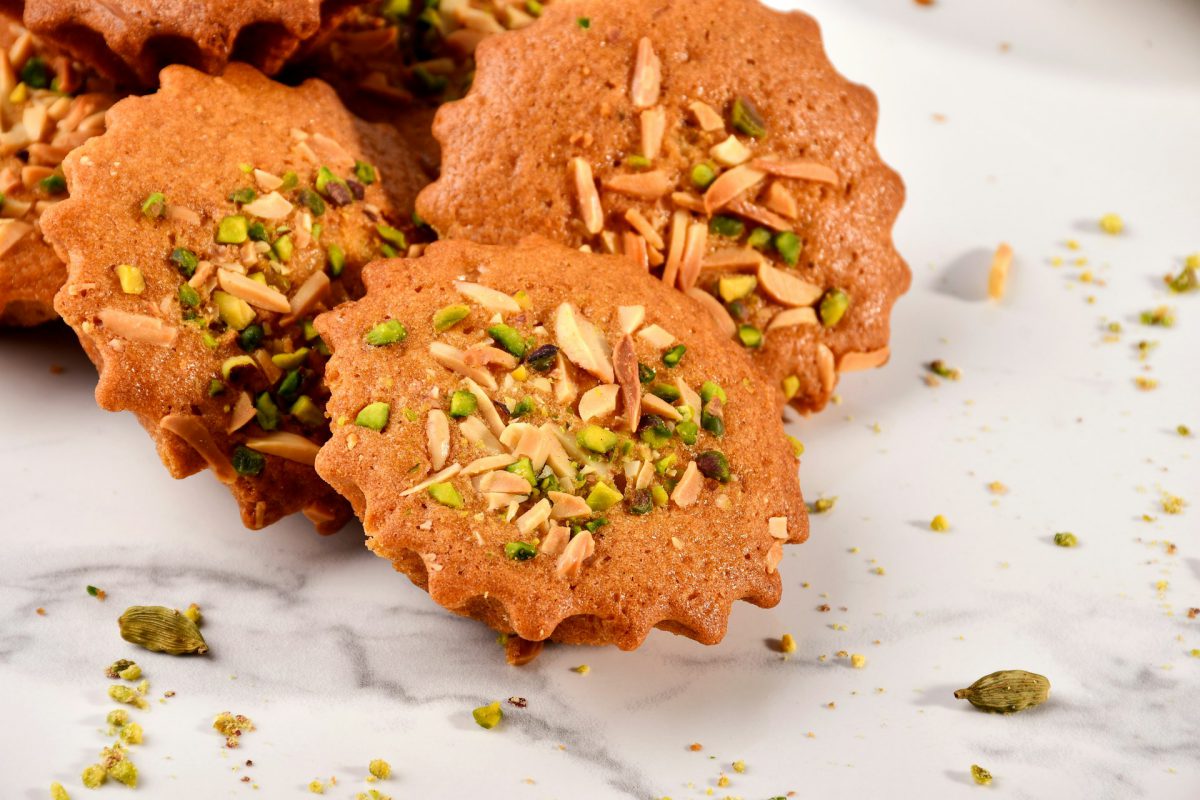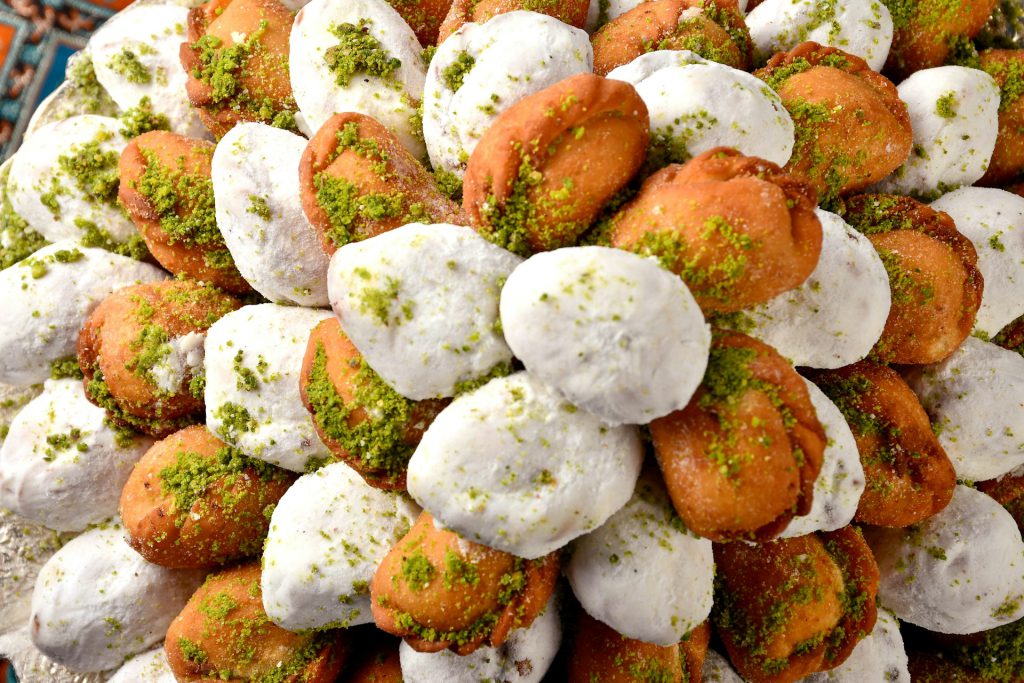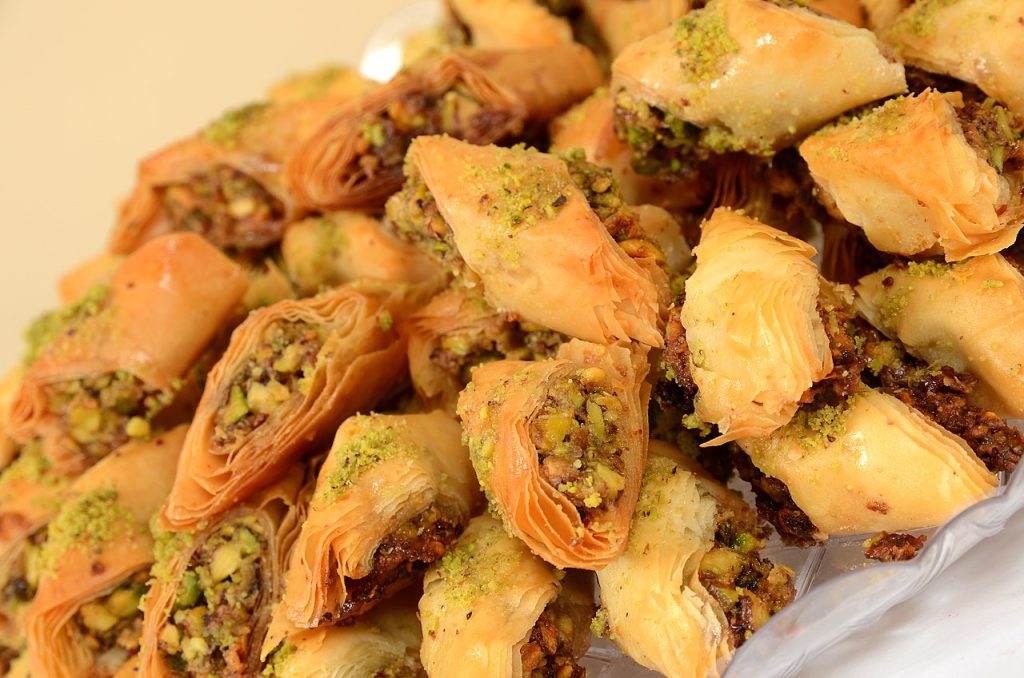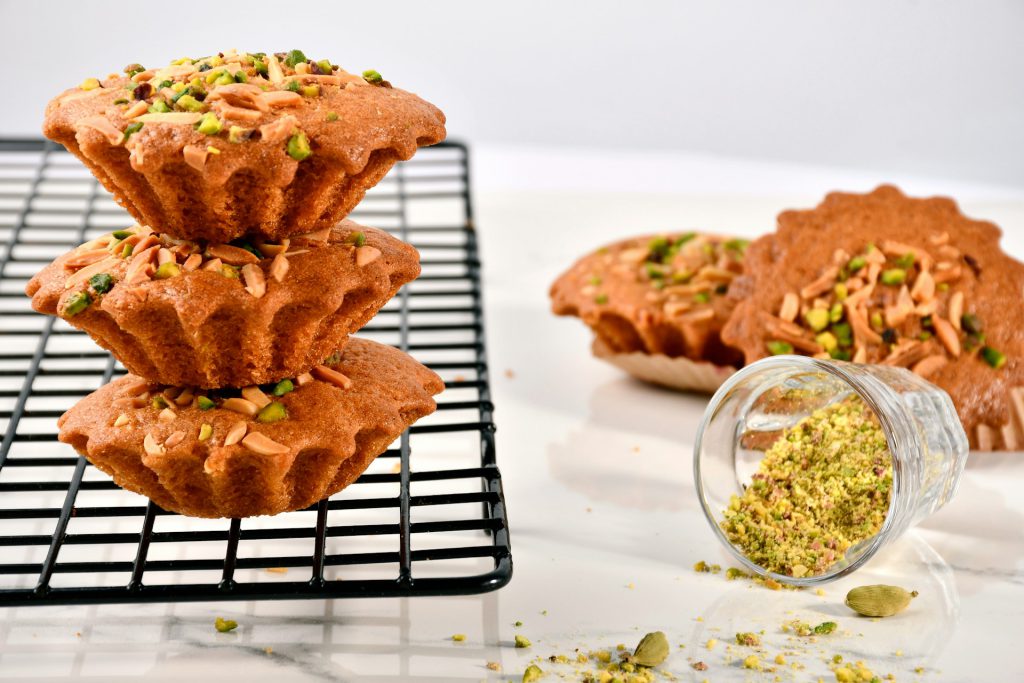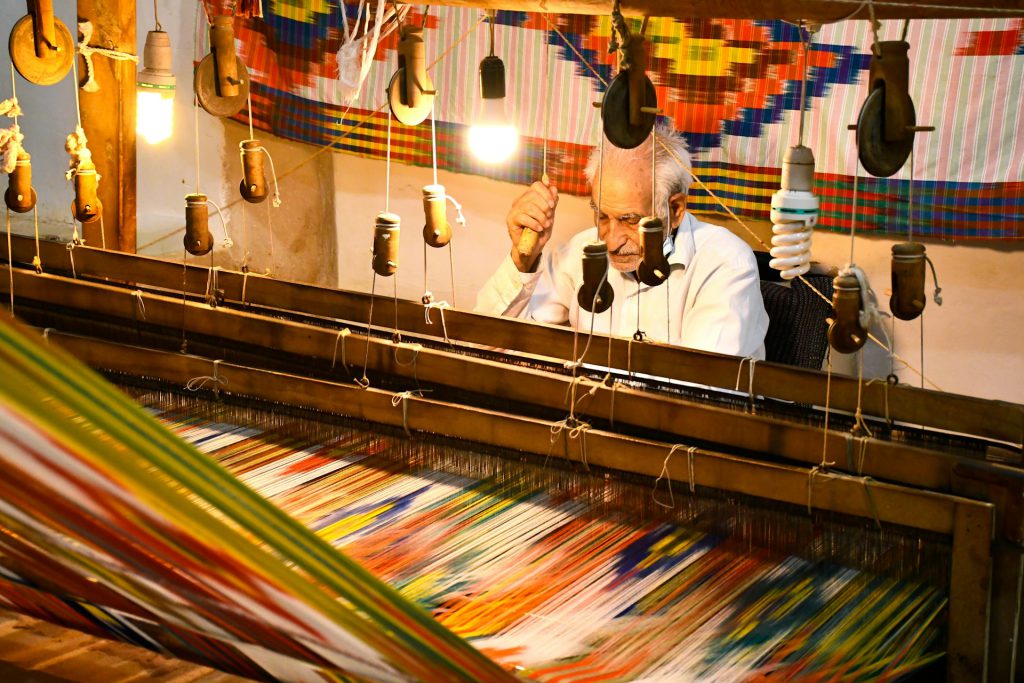Table of Contents
Yazd souvenirs, each echoing the city’s deep-rooted cultural traditions and exceptional craftsmanship. As you wander through the ancient bazaars, you’ll find a vibrant collection of handicrafts and an irresistible variety of sweets, all showcasing the rich heritage of Yazd. Beyond shopping, these markets offer a chance to immerse yourself in the stunning architectural artistry and the whispers of history embedded in every corner.
Here are the top 10 Yazd souvenirs that we are going to explore together:
Yazd Qottab
Qottab is a cherished pastry that captures the essence of Yazd souvenirs and culinary artistry. This delightful treat is composed of two distinct layers: the outer shell, which is fried to a perfect golden brown, and the inner filling, a fragrant blend of almond powder, sugar, and cardamom. The outer layer has a texture reminiscent of bread, offering a satisfying crunch that complements the sweet and nutty interior. The addition of cardamom not only enhances the flavor but also infuses the pastry with a captivating aroma that entices anyone nearby. Whether enjoyed during festive occasions or as a comforting evening snack with tea, Qottab is a staple in Yazd’s rich tapestry of sweets.
There are two main variations of Qottab: the traditional Yazd version, dusted with powdered sugar, and the Asali variant, which is soaked in honey for a more indulgent experience. Each bite of Qottab tells a story of tradition and craftsmanship, as local pastry chefs perfect their recipes over generations. The popularity of this sweet treat extends beyond Yazd, making it a sought-after souvenir for visitors eager to take a piece of Iranian culture home with them. With its unique combination of textures and flavors, Qottab is not just a dessert; it is an invitation to savor the sweet side of Yazd’s heritage.
Yazd Baklava
Yazd Baklava is a delightful pastry that has captured the hearts of sweet lovers worldwide. This delicacy, unique among Yazd souvenirs, boasts a flavor profile that sets it apart from its Turkish counterpart. The combination of fragrant cardamom, aromatic rosewater, and the rich flavors of almonds and pistachios create a taste experience that is truly unparalleled. Yazd Baklava is crafted using a blend of milk, eggs, flour, oil, and the signature spices and nuts. The result is a pastry that is both nutritious and delicious, providing a boost to memory, digestion, and heart health. The pastry’s popularity has transcended borders, with fans hailing from as far as Canada and the United States.
The art of making Yazd Baklava has been passed down through generations, with skilled confectioners perfecting their craft over time. The pastry’s reputation for excellence has made it a sought-after souvenir for visitors to Yazd. Whether enjoyed during festive occasions or as a daily treat, Yazd Baklava remains a beloved part of the city’s culinary heritage. For those who have yet to experience the magic of Yazd Baklava, a taste is highly recommended. With its unique flavor profile and cultural significance, this delicacy is a must-try for anyone looking to savor the sweet side of Yazd’s traditions.
Yazdi Cake
Yazdi Cake is a beloved treat that has captured the hearts of sweet lovers across Iran and beyond. This traditional pastry, one of the best Yazd souvenirs, boasts a unique flavor profile that sets it apart from other cakes. The combination of fragrant cardamom, aromatic rosewater, and the rich taste of yogurt creates a delightful balance of spice and tang that tantalizes the taste buds.
Yazdi Cake is crafted using a blend of white flour, eggs, sugar, butter, baking powder, baking soda, yogurt, salt, and the signature spice of cardamom. Some variations also include the addition of raisins or pistachio slivers for an extra layer of texture and flavor. The result is a cake that is both soft and tender, with a melt-in-your-mouth quality that makes it an excellent choice for a souvenir or a special treat.
Halva Ardeh
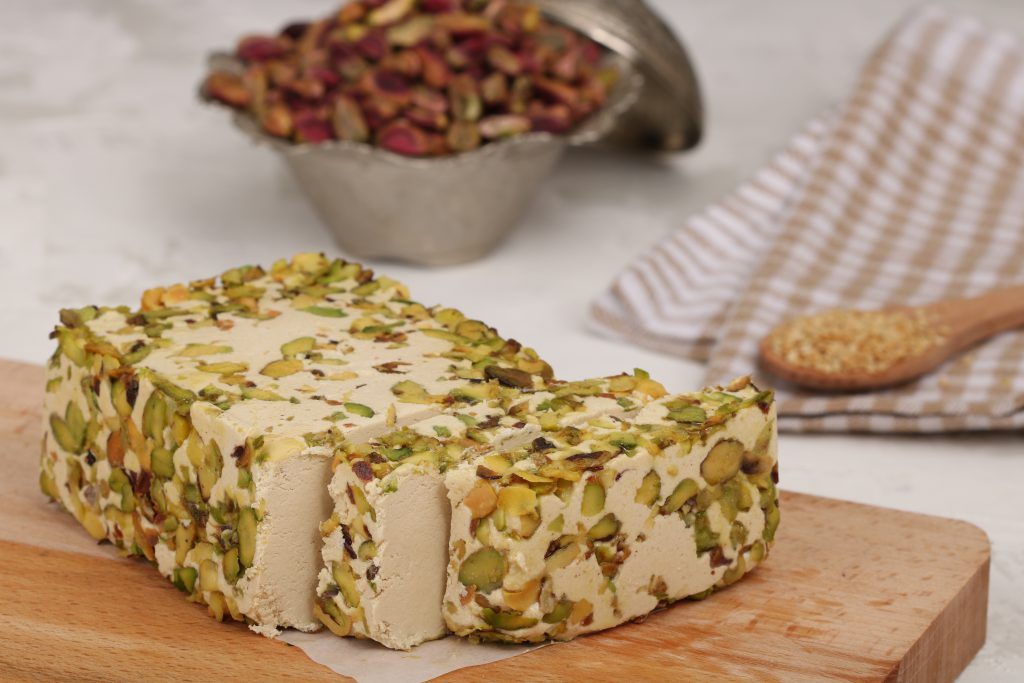
Halva Ardeh, a cherished confection from Ardakan in Yazd province, is steeped in Iran history and culture. Made primarily from sesame butter, or Ardeh, this delightful sweet has gained popularity for its rich flavor and nutritional benefits. The production of Halva Ardeh in Ardakan adheres to traditional methods, ensuring that no chemicals are used, which contributes to its wholesome reputation. The sesame seeds used in Ardeh are packed with nutrients, offering a hot and sweet nature that enhances the overall taste. This halva not only serves as a delicious treat but also as a source of energy, making it a favorite among athletes and those needing a boost.
The benefits of Halva Ardeh extend beyond its delectable taste. It is known to improve memory, prevent anemia, and combat fatigue, making it a nutritious addition to any diet. A good Halva Ardeh should be soft, with a light cream color and a texture that holds together without crumbling. Traditionally enjoyed during the colder months, it pairs wonderfully with grape juice or honey, creating a complete and nourishing meal. For anyone visiting Yazd or Ardakan, indulging in this delightful halva is a must, whether for personal enjoyment or as a thoughtful souvenir to share with friends and family.
Haj Badami
Haji Badami is a delightful sweet that embodies the essence of Yazd souvenirs and culinary heritage. These small, nutty confections are crafted from a blend of high-quality ingredients, including almonds, egg yolks, rose water, powdered sugar, baking soda, and cardamom. The combination of these elements creates a treat that is not only delicious but also packed with nutritional benefits, thanks to the presence of almonds. With their rich flavor and satisfying texture, Haji Badami sweets are a popular choice among locals and visitors alike, making them a must-try when exploring the region.
These tiny sweets have gained a reputation beyond Yazd, being available in pastry shops and cafes throughout Iran, where they are often enjoyed alongside coffee and tea. Their small size makes them an ideal alternative to high-calorie snacks, allowing for guilt-free indulgence. Traditionally served with tea, Haji Badami offers a delightful contrast to the warmth of the beverage, enhancing the overall experience. For anyone visiting Yazd, purchasing Haji Badami as a souvenir is highly recommended, as it captures the sweet traditions of the city in every bite.
Yazd Termeh
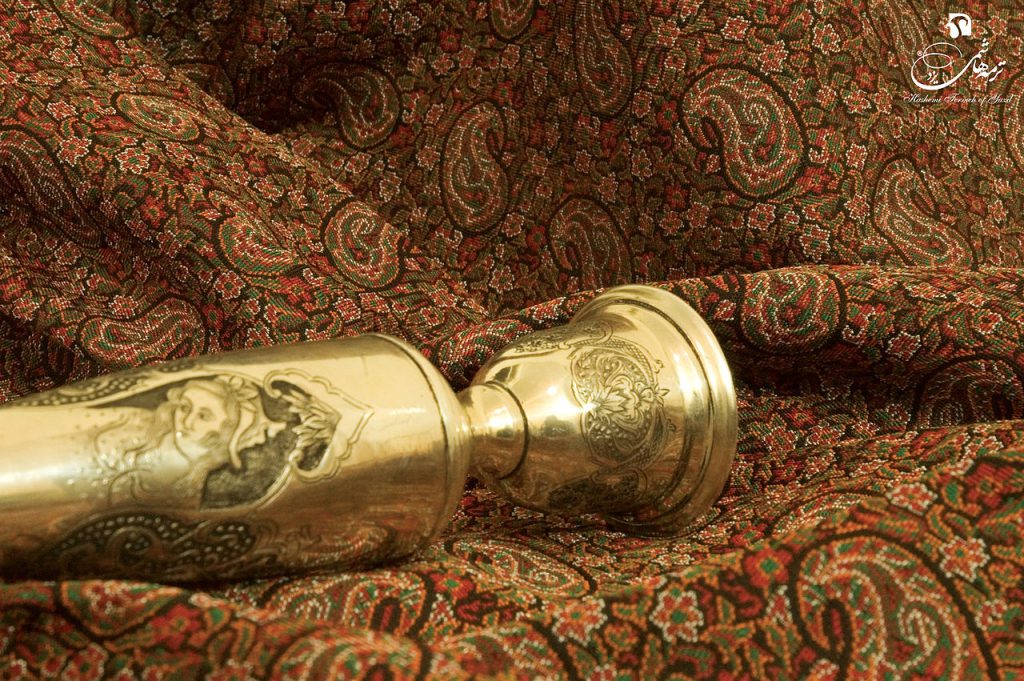
Termeh is a stunning handwoven fabric that reflects the rich tapestry of Persian culture, especially in Yazd, where skilled artisans have honed their craft over centuries. The process of creating Termeh is labor-intensive, requiring meticulous attention to detail and a deep understanding of traditional techniques.
Artisans use high-quality materials such as silk and wool, often incorporating gold or silver threads to enhance the fabric’s elegance. The intricate designs, featuring geometric shapes, paisley motifs, and floral patterns, are woven by hand, with each piece taking considerable time to complete—typically only 25 to 30 centimeters of fabric can be produced in a day. This dedication to craftsmanship ensures that every piece of Termeh is not just a textile but a work of art, rich in history and cultural significance.
Yazd stands out as a prominent center for Iranian Termeh production, where visitors can explore vibrant shops filled with these exquisite textiles. The city’s unique designs often reflect local artistic traditions, making each piece a representation of Yazd’s heritage. Traditionally, Termeh was used for various purposes, from clothing to decorative items, and it held a special place among Persian nobility. Today, it continues to be cherished, finding its way into modern fashion and home decor, such as table runners and wall hangings. Whether as a souvenir or a decorative statement, Termeh textiles from Yazd embody the timeless beauty and craftsmanship of Persian artistry, inviting all to appreciate the intricate stories woven into each thread.
Yazd Matting
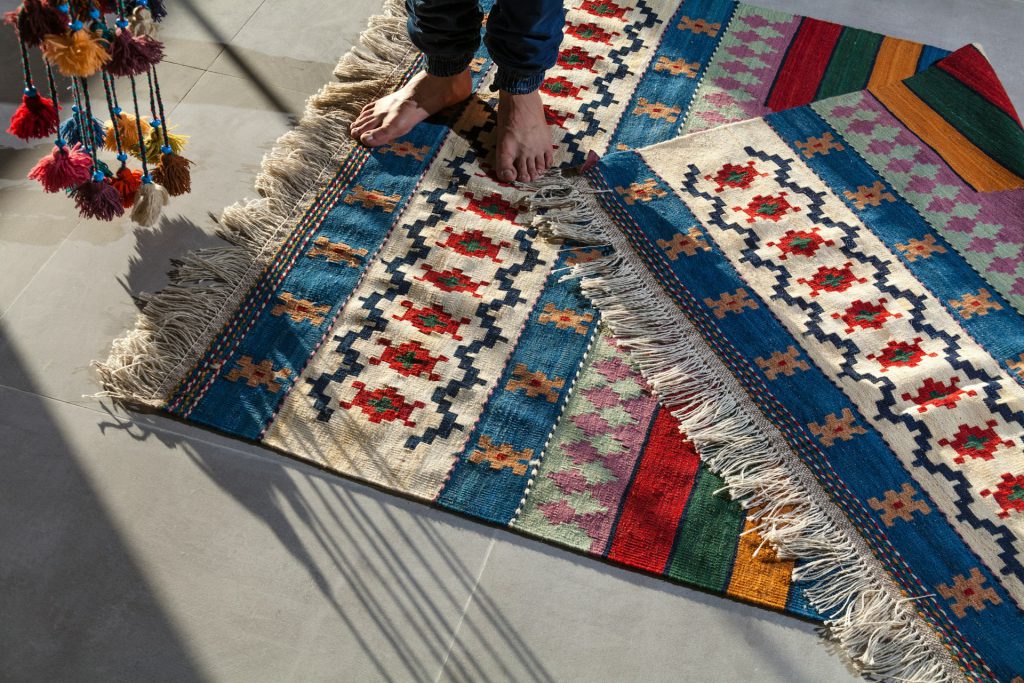
Matting, known locally as Zilou, stands as one of the oldest Iranian handicrafts in Yazd, with roots tracing back to the pre-Islamic era. The heart of Zilou production is found in Meybod, a city within Yazd province, where artisans have perfected this craft over centuries. The oldest examples of Zilou can be seen in the Grand Mosque of Yazd, a testament to its historical significance. Made from cotton yarn, Zilou features a variety of beautiful designs, including Roman straps, intricate embroidery, and patterns resembling both large and small eight feathers. Its lightweight and breathable nature makes it particularly popular during the hot summer months, providing comfort and style in the sweltering desert heat.
A distinctive feature of Yazd’s Zilou is its use of natural dyes derived from plants, ensuring that no artificial colors are present in the final product. Traditional colors are sourced from materials like walnut skins and lapis lazuli, creating a vibrant palette that reflects the region’s natural beauty. Historically, Zilou was a vital trade item in Yazd, valued for its durability and aesthetic appeal. Today, it continues to be cherished not only as a practical floor covering but also as a piece of art that embodies the rich cultural heritage of Yazd. Visitors to the region are encouraged to explore this unique craft, as purchasing Zilou provides a meaningful connection to the ancient traditions of the area.
Yazd Ikat
Yazd Ikat, also known as ShamadBafi, is a remarkable textile craft that boasts a rich history of over 800 years. Traditionally woven from natural silk, this beautiful fabric has evolved over time and is now primarily made from viscose yarn. The vibrant colors—warm reds, purples, greens, and yellows—create an enchanting appeal that captivates those who encounter it. The intricate patterns and designs of Ikat are not just visually striking; they also reflect the cultural heritage of Yazd, making each piece a unique representation of Persian artistry.
In addition to Ikat, the people of Yazd also utilize a fabric known as Shamad, crafted from cotton yarn and rayon. This lightweight and breathable material is perfect for the hot summer months, often used as a blanket or for traditional clothing. Shamad comes in various designs, including striped and checkered patterns, showcasing the creativity and skill of local artisans. As a versatile fabric, it serves practical purposes while also being a beautiful addition to any home. Whether you choose Ikat or Shamad, these textiles are not just souvenirs; they embody the craftsmanship and cultural richness of Yazd, making them cherished keepsakes for visitors and locals alike.
Yazd Pottery
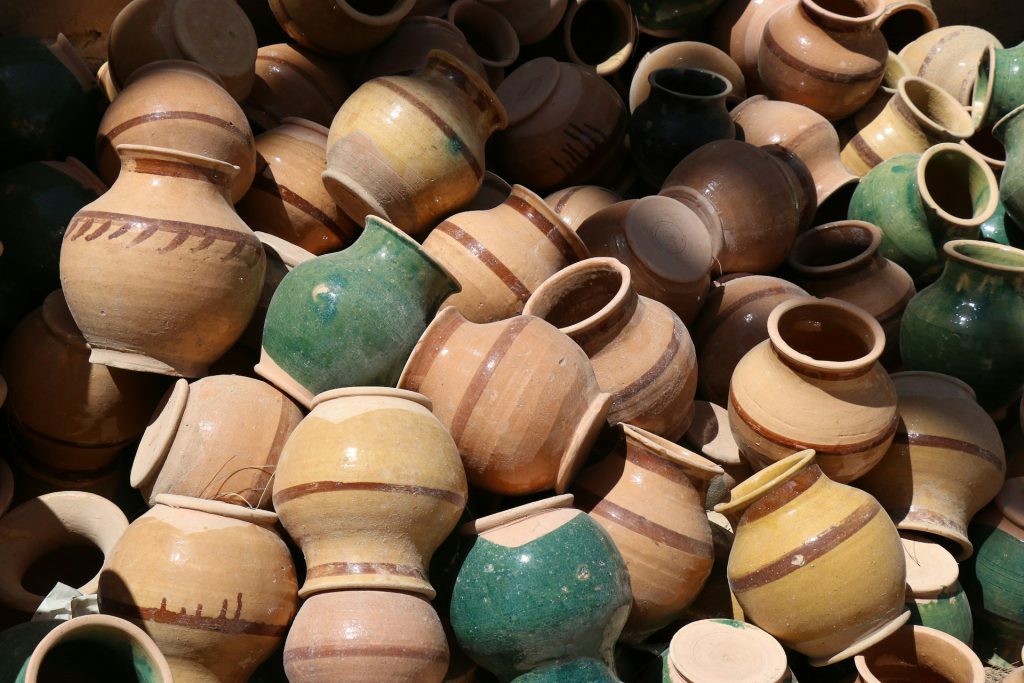
Yazd pottery, particularly from the city of Meybod, is a celebrated craft that has flourished for centuries, showcasing the artistic talents of local artisans. This ancient practice relies on the region’s high-quality clay, which is known for its excellent adhesion properties. The pottery produced in Meybod is characterized by its intricate designs and vibrant colors, often featuring motifs such as the sun depicted as a beautiful woman, decorative foliage, birds, and abstract shapes. The use of blue, green, and yellow glazes, traced with fine black lines, adds to the visual appeal of these unique pieces, making them not only functional but also works of art.
The historical significance of pottery in Yazd is profound, with evidence suggesting that the craft has been practiced for over three thousand years. Artifacts found in ancient graves indicate that pottery was an essential part of daily life and cultural expression in the region. Today, Yazd pottery remains a vital aspect of local craftsmanship, with artisans continuing to produce a variety of items, including jugs, pitchers, and decorative pieces. The combination of traditional techniques and the rich geological resources of the area ensures that Yazd pottery is both beautiful and durable, making it a popular choice for souvenirs that reflect the region’s heritage.
Yazd Copper
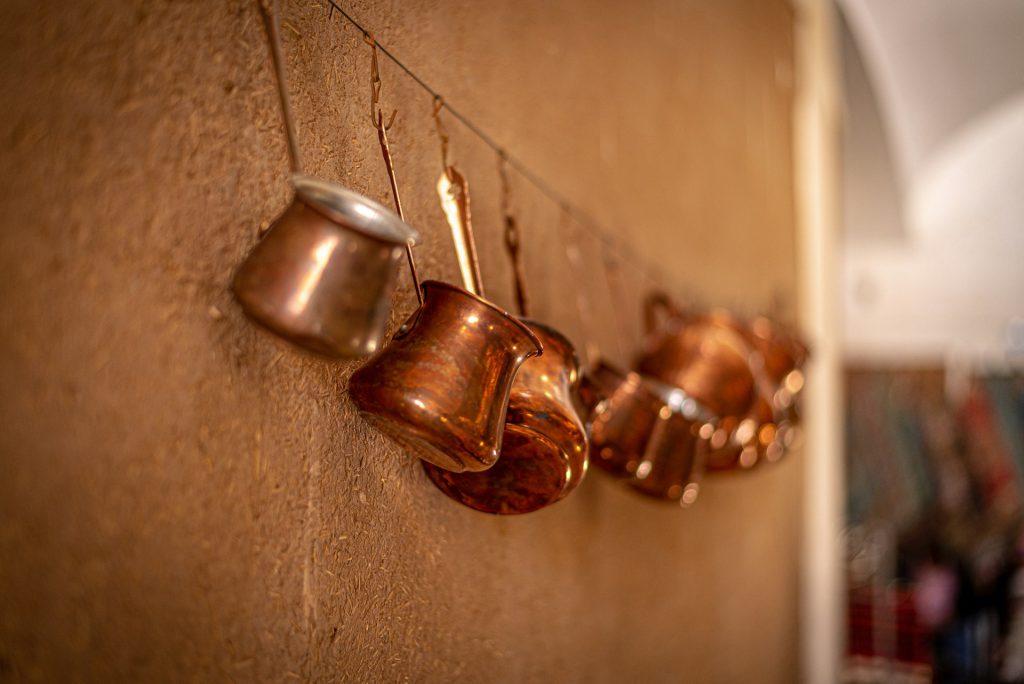
Yazd is renowned for its exquisite copper artifacts, making it one of the most famous centers for copper craftsmanship in Iran. The city, alongside Kerman, has a long-standing tradition of producing durable and beautiful copperware. Visitors to Yazd can explore the bustling old market, where master craftsmen skillfully shape copper dishes, creating a vibrant atmosphere filled with the rhythmic sound of hammers striking metal. This auditory experience is akin to a symphony orchestra, as each strike contributes to the creation of stunning pieces that reflect both functionality and artistry.
The quality of Yazd copperware is attributed to the region’s rich resources and the artisans’ dedication to their craft. Copper dishes and utensils are not only practical, often used for serving food and beverages, but they also serve as decorative items that enhance the aesthetic of any space. The intricate designs and attention to detail in each piece make Yazd copperware a popular souvenir for visitors. Prices can vary based on the type and size of the items, but the investment in these handcrafted treasures is well worth it, as they embody the cultural heritage and artistic legacy of Yazd.
FAQs about Yazd Souvenirs
Q1: What is Yazd famous for?
A1: Yazd has always been famous for its high-quality silk and carpets. Today, it is one of Iran’s key industrial centers for textiles. The city also has a significant ceramics and construction materials industry, along with unique sweets and jewelry industries.
Q2: Is Yazd the oldest city in the world?
A2: The city of Yazd is first mentioned in historical records dating back to around 3000 years BC when it was known as Ysatis. Yazd is often called the “oldest living city in the world” and was once part of the domain of the Medes, an ancient people of Iran.
Q3: What is the souvenir of Iran?
A3: Every traveler to Iran should take home a Persian carpet as a souvenir of their visit because it is one of the finest Iranian handicrafts that truly reflects Persian culture. The Persian carpet is Iran’s most beautiful souvenir, known and admired around the world.
Q4: What is worth buying in Iran?
A4: The ‘Akbari’ pistachio, known for its long shape, is the most popular type of pistachio in Iran. Pistachios can be enjoyed roasted and salted or raw. In Iran, they are also used in various pastries like Gaz and Sohan.
Q5: What is unique to Iran?
A5: Iran has a long tradition of scholarship that has produced a rich culture in art, literature, poetry, music, cuisine, and architecture. Ancient Iranian scholars wrote important works on philosophy and medicine, and an Iranian mathematician was the one who invented algebra.
Last Words: Explore the Best of Yazd Souvenirs with a Customized Tour
Yazd souvenirs reflect the city’s strong cultural traditions and skilled craftsmanship. While exploring the old markets, you’ll see a colorful mix of handmade crafts and delicious Yazd sweets, all highlighting the city’s rich history. Besides shopping, these markets let you enjoy the beautiful architecture and feel the history in every part.
If you’re looking to explore Iran and uncover the best Yazd souvenirs, consider embarking on a customized tour to enhance your travel experience. To help you achieve this, To Iran Tour offers expertly crafted Iran tours and travel packages. Our team of professionals is dedicated to designing your journey in a way that aligns with your personal preferences and travel goals. Whether you’re drawn to Yazd souvenirs and its traditional bazaars or its stunning architecture, we tailor every aspect of your itinerary to provide a memorable experience.
We are here to assist you in crafting the perfect Iran Tour that caters specifically to your desires and interests. Let us help you explore Yazd souvenirs and Iran’s treasures with ease and expertise.

